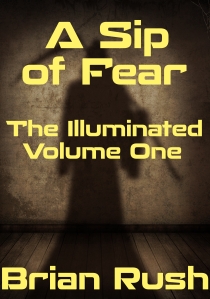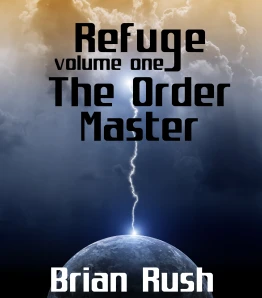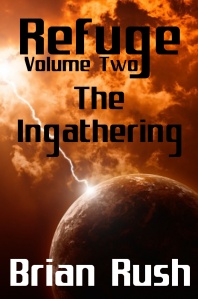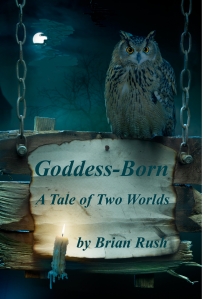 Continuing the series of posts on not-so-dark storytelling, I’m now going to deal with a subject that is the antithesis of darkness: optimism. A good story may include circumstances and events that are gruesome and appalling, challenges that seem insurmountable, and problems that cause the readers to shake their heads in grim certainty that they cannot be solved, but they are. Or most of them are. Or at any rate, things work out. Things get better. Good triumphs over evil, and They Live Happily Ever After.
Continuing the series of posts on not-so-dark storytelling, I’m now going to deal with a subject that is the antithesis of darkness: optimism. A good story may include circumstances and events that are gruesome and appalling, challenges that seem insurmountable, and problems that cause the readers to shake their heads in grim certainty that they cannot be solved, but they are. Or most of them are. Or at any rate, things work out. Things get better. Good triumphs over evil, and They Live Happily Ever After.
I’ll divide the subject of optimism into two parts, as I did that of heroism, but I think they may both fit into a single post.
Optimism Is Realistic
Let’s start with an observation that, despite the proclamations of cynics, optimism is actually realistic. It’s borne out by the patterns of history and the flow of events up to now. Things haven’t gotten worse, nor have they remained intractably dire. Things have, for the most part, gotten better for most people over most of the world. Here is a partial list of major evils that either no longer happen, or happen rarely compared to the past.
Chattel slavery. There’s still a bit of slavery in the world, but for thousands of years, whole societies were founded on it, from the ancient Roman Empire to 18th and 19th century America. That’s gone. Sure, you’ll hear some people talk about wage slavery, but that’s a metaphor. Capitalism has few critics harsher than I am, but I’d much rather be a wage slave than a real slave.
Institutionalized racism and sexism. All right, we still have racism and sexism around, far too much of both, but in my childhood both of those were institutionalized in law and practice, from Jim Crow to laws against married women owning property to common practices in housing and employment. Most of that, and all of it on an overt level, is gone from the advanced world.
Great-power war. Yes, we still have wars. But they aren’t fought by great powers against each other, and that means the most destructive wars aren’t happening anymore. The last time that kind of thing was going on was 69 years ago (1945). The United States and the Soviet Union had a rivalry and military arms race from 1945 until 1991, when the Soviet Union fell. The two powers never once fought an actual war against each other. During the Cold War, conventional wisdom was that it would end eventually in a hot war, because that’s how such rivalries always had ended in the past. It didn’t, and that was so unprecedented as to be miraculous. A combination of nuclear standoff and economic interdependence made great power war unthinkable, and it still does.
These three evils — slavery, institutionalized racism and sexism, and great-power war — are things that were once viewed as part of the human condition, impossible to eliminate. That belief was wrong. Today, fewer people die from violence as a fraction of total deaths than ever before. Famine and epidemic have both declined as well. The general trend is that things have gotten better, and barring a collapse of civilization, we have every reason to expect that they will continue to get better.
Take someone from 500 years in the past, pop him into a time machine to the year 2014, and his first impression on seeing the world of today would be that he had found Utopia. He’d change his mind about that on better acquaintance, one imagines, but he’d certainly conclude that things had improved dramatically. Jump in a time machine and travel 500 years from the future, and you or I would, almost certainly, draw a similar conclusion about the world of the future.
Pessimism is historically counter-factual. Optimism is justified by the facts, past and present.
Optimism Makes a Good Story
A story takes the reader on a journey of the spirit. Through the imagination and the power of the word, a reader faces dangers and challenges, learns and grows, tries, fails, and ultimately succeeds, and is transformed. Into what? Into whatever the story’s protagonists become, following the trajectory of the themes and messages incorporated into the writing.
The experience of reading a story in which things get better and problems are solved, with great difficulty and danger, is uplifting and makes the reader feel good at the end. The harder the problems, the more dreadful the dangers and challenges facing the protagonists, the more satisfying it is when it all works out in the end. The worse the protagonists’ moral and personal shortcomings, the greater the triumph when they are overcome.
Optimism makes for a good story, provided of course that the happy outcome isn’t easily achieved and the obstacles are great and challenging for the characters. The contrast between the depths of trouble and the ultimate triumph is what creates the emotional tension, the wild ride of the spirit, that gives the reader a memorable experience and a smile when the story is finished.
In fact, there’s really only one reason why a reader would be unsatisfied with such a tale, and that’s if the reader’s own cynicism makes it impossible to believe in good outcomes (or to suspend disbelief). If the reader is personally convinced by pessimism, despite the facts of history that tell us pessimism is unrealistic, then an optimistic story can seem like a promise that can’t be fulfilled, an attempt to deceive, to sell the reader a bill of goods.
But where does that leave the author? If there can be no uplifting, positive outcome to the struggle, if things can’t get better, if all hopes, dreams, and aspirations are false, then where is the emotional contrast, the journey from depth and darkness to the illuminated heights, that makes for a gripping tale? It’s not impossible to make this work, but it’s difficult, and in the end the achievement is less memorable and much less satisfying, in this reader’s opinion at least.









